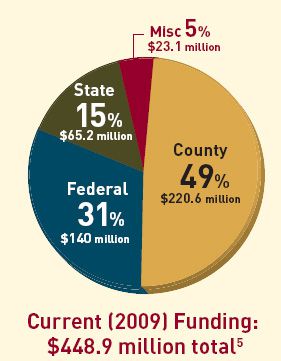The Minnesota Senate — like the Minnesota House before it — today approved cuts in child protection funding in the state. Sen. Linda Berglin (DFL-Minneapolis) tried to save funding by amending a larger bill that cuts almost $1 billion in state spending. Most of the attention has focused on its impact on state workers. Little of it has focused on whether Minnesota is adequately protecting children from abuse.
And it was clear from today’s debate that few legislators knew the answer to that question, and weren’t much interested in finding one, either. Most everyone agrees children should be protected, most everyone says government has a role in protecting the most vulnerable, and most everyone seems to agree that children fit that category. And yet, there’s the cut in the first budget bill to go before the full Senate, rather than the last.
Why?
Committee heads refused to answer questions from senators when they were asked about the cuts today.
“This is a generous state,” Rep. Geoff Michel declared. “And it will be a generous state after this bill passes.”
That’s true. Minnesota does spend a great deal of money on human services, but it’s not clear whether it spends much on child protection. And it’s not clear whether the cuts would actually lead to more children dying or being abused, as DFLers insist.
But that makes today’s vote all the more puzzling because the Senate didn’t hold any public committee hearings held a single hearing on the bill and the senator who is shepherding it said today that they weren’t getting phone calls from anyone opposing the cuts. But why would they? No mainstream media has presented any stories or, apparently, asked any questions about child protection in the two weeks since the bill surfaced, or of course, in the five working days since the measure passed the House. Compare that to the number of stories about Michele Bachmann you’ve seen floating about.
In the big scheme of the bill, the child protection element is pretty small potatoes — $19 million is smaller than $1 billion.
But that, according to the Center for Advanced Studies in Child Welfare at the University of Minnesota (which supplied the graphic), “is a 30% reduction in the state’s contribution to the Child Protection system. Already, Minnesota is amongst the lowest of all of the states in its funding of child welfare services.”
That, too, leaves unanswered questions because child protection happens at the county level. How does Minnesota compare to other states when county funding is considered? And what happens to the county funding? The Legislature is also cutting aid to counties. What priority will they put on child protection in their next budgets? Good questions, which do not have any answers.
If politicians have targeted child protection — they have — maybe there’s a reason for that. MPR’s Sasha Aslanian reported last November, for example, that child abuse cases have dropped to their lowest level since 1982.
But some people said that’s because there are fewer resources to help. “My wife is a teacher and has to call child protection services quite frequently,” one writer told us. “She is often told that they can’t do anything, or given the “what do you want us to do about it” response. Maybe the drop in requests for help is because people realize they won’t get any help, so requesting help is a waste of time.”
Minnesota keeps records of the number of cases involving abuse. But it doesn’t keep any record of the number of calls to child protection.
There is also some indication that the counties are “raising the bar” for what qualifies as child abuse, according to Mary Regan, the executive director of the Minnesota Council of Child Caring Agencies. “Maybe they figure, for example, that a three year old can be at home alone for a few hours. We heard one example of a homeless youth in a transitional living program — a young teenage mom — who had yanked the baby out of the crib and dislocated its shoulder. She was (reportedly) told ‘it doesn’t meet our criteria.'”
In Beltrami County three years ago, the county stopped paying for out of home placement for children on the Red Lake Reservation. The state stepped in. “We have a large disproportionate number of American Indian children in the child welfare system, and our outcomes for those children aren’t very good,” an assistant commissioner of the Department of Human Services told us.
What happens now? Do things get worse? How much worse? And what does worse look like? The answer to those questions never came up in today’s floor session. The questions never came up either. After the floor session, a spokesman for Senate Republicans refused to answer them.
“We were sent here to make the tough decisions,” Rep. Jeremy Miller, R-Winona, said during today’s floor debate. And he’s right. Today’s decision was tough. Nobody has any fun cutting child protection. But that’s not the question; the question is whether it was informed? Again: Maybe. Maybe not.
That we don’t know the answer to that question and dozens of others on this issue is a failure of the politicians and those of us who cover the issues they decide.

